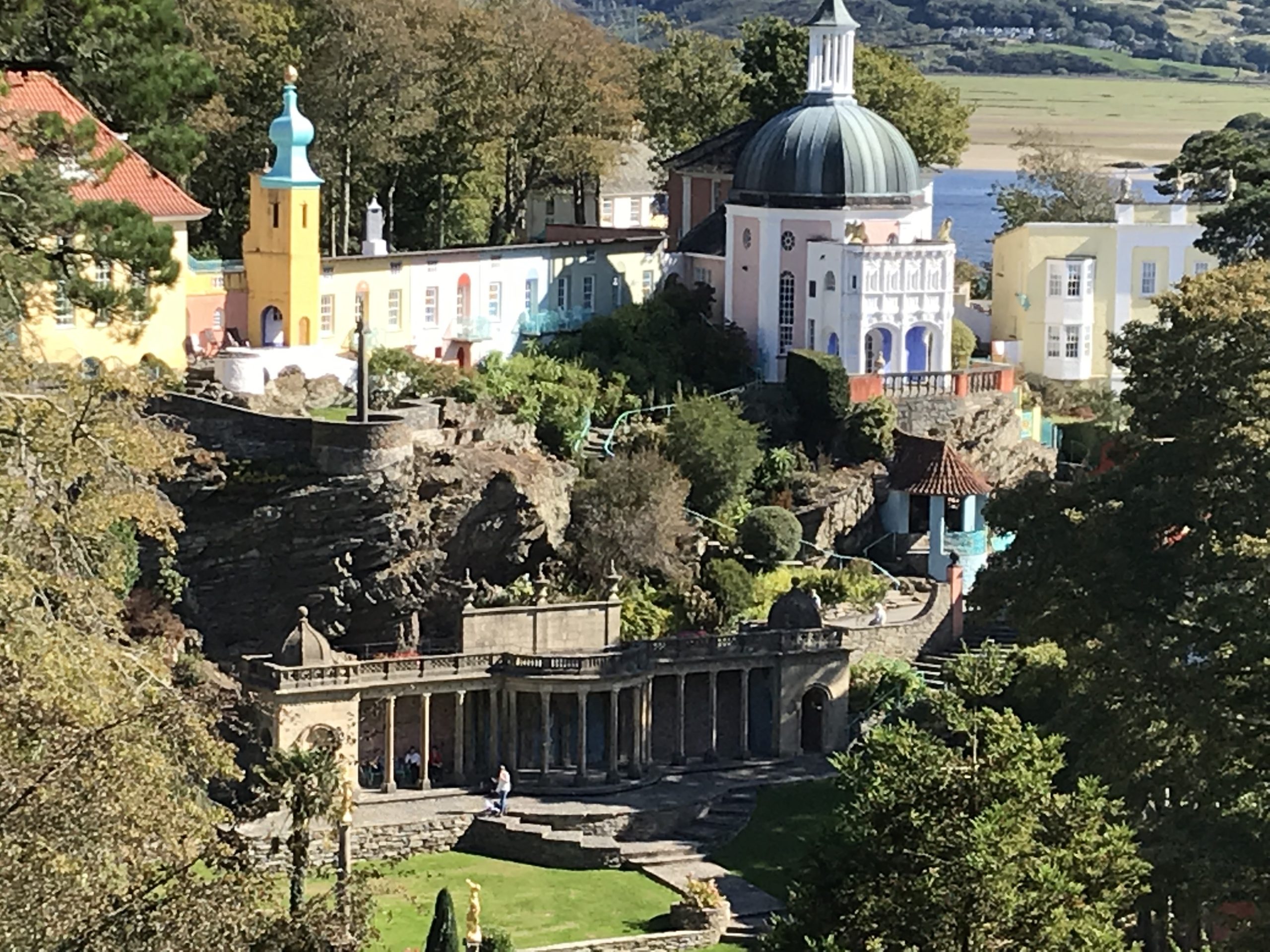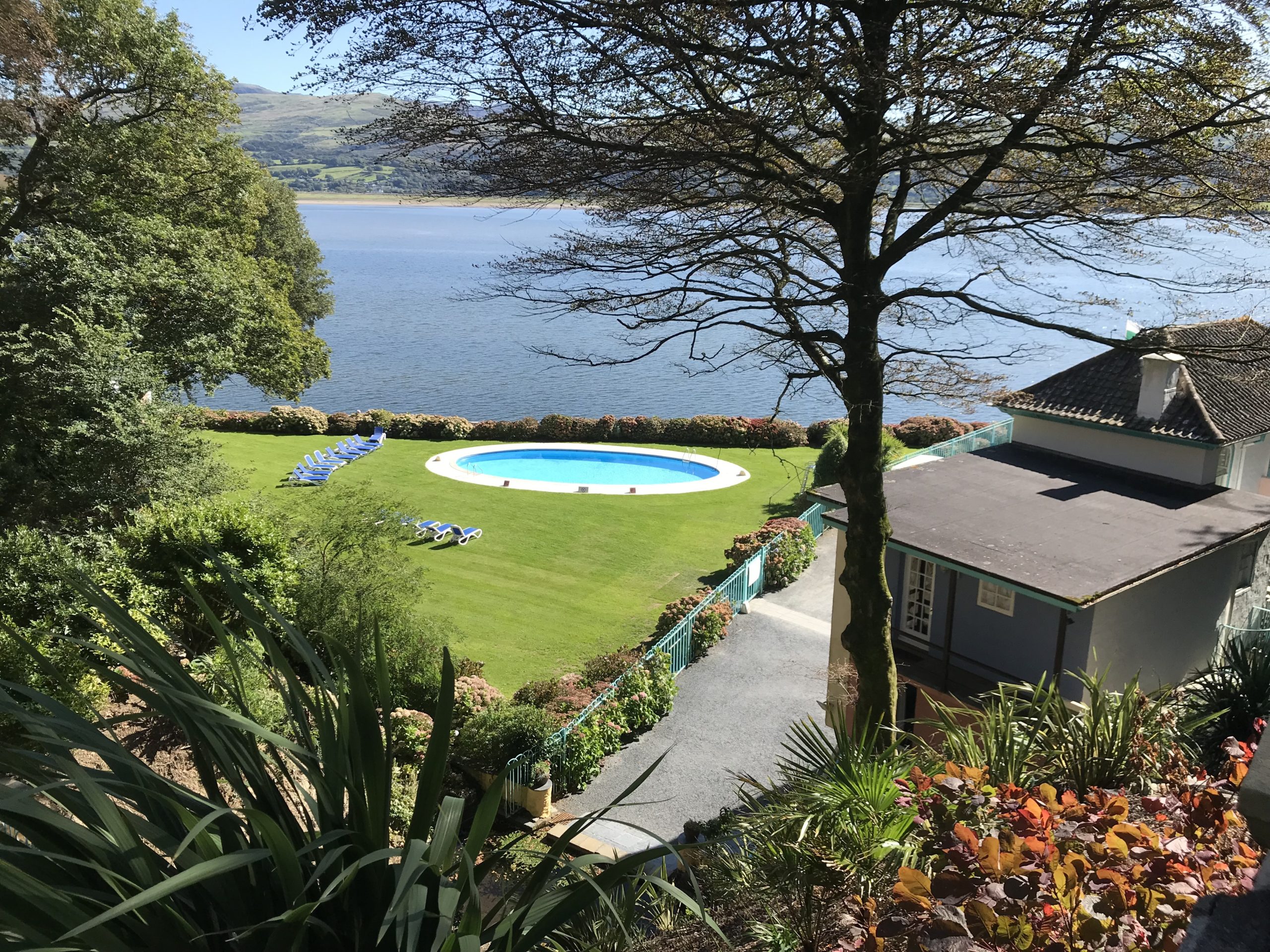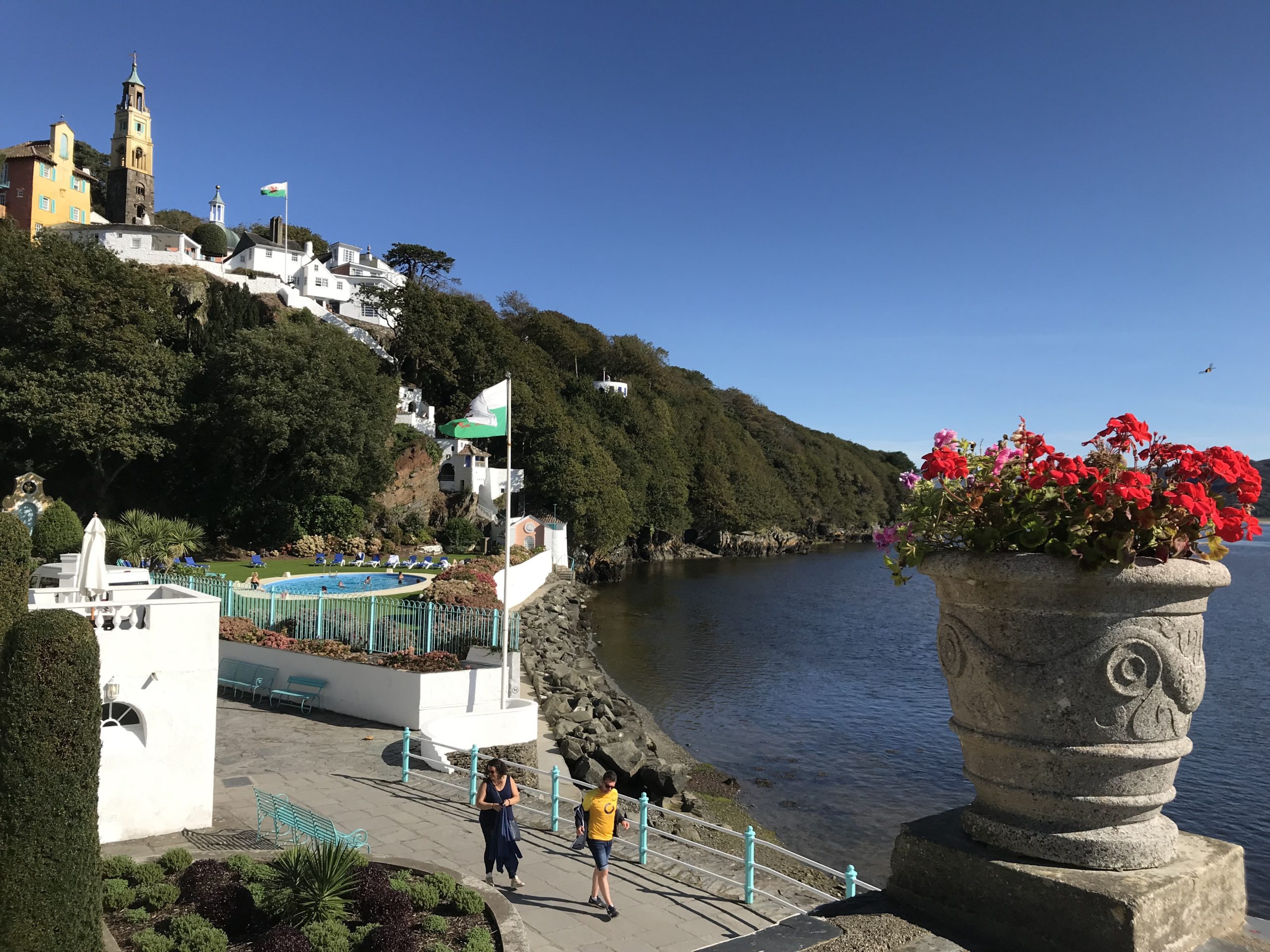Attractions
Plenty to do, no matter the weather.. find a small handful of our recommendations below.
Portmeirion
Have you ever seen The Prisoner?
If you have you may recognise some of these pictures.
Portmeirion was built by sir Clough Williams-Ellis to show how a naturally beautiful site could be developed without spoiling it. He wanted to show that architectural good manners could also be good business. He campaigned for the protection of the rural environment and fought for the beauty, “that strange necessity”.
Portmeirion was built from 1925 to 1973 on its own private peninsula on the coast of Snowdonia. It has over 50 buildings of various styles and functions. There are shops, cafes, restaurants and great walks.
Surrounding the village are over 70 acres of sub-tropical woodland gardens where many rare exotic species thrive in mild climate, kept frost free thanks to the warming influence of the gulf steam.
Portmeirion is open daily all year from 9:30am to 5:30pm



Castles

Criccieth Castle
Our very own, just a 5 minute walk from the Glyn Y Coed .
Criccieth’s very own Castle is situated on the headland between two beaches on a rocky peninsula overlooking Tremadog Bay.
Construction on Criccieth began in the early 13th century at the behest of Llywelyn ap Iorwerth of Gwynedd, and was later continued by his grandson Llywelyn ap Gruffydd, Prince of Wales. Because of its strategic location, it was a focal point in the war between England and Wales ? eventually it was captured by Edward I of England during his second campaign in North Wales (1282-1283).
It’s well worth taking a walk up to see the old ruins of the castle and get a great view of Criccieth.
Harlech Castle
Look out our windows across the bay and you’ll see Harlech Castle.
It’s a concentric castle, constructed atop a cliff close to the Irish Sea. Architecturally, it is particularly notable for its massive gatehouse.
Built by King Edward I during his conquest of Wales, the castle was subject to several assaults and sieges during its period of active use as a fortification. The seven-year siege of the castle, during the Wars of the Roses has been memorialised in the famous song “Men of Harlech”.
Dolbadarn Castle
Conwy Castle
Caernarfon Castle
Caernarfon Castle (Welsh: Castell Caernarfon) is one of the biggest in Wales and is a must for the history buff! Constructed in Caernarfon, Gwynedd, North-west Wales, by King Edward I of England, following his conquest of Gwynedd in 1283. Caernarfon Castle is part of the World Heritage site ‘Castles and Town Walls of King Edward in Gwynedd’.
Caernarfon castle and the town is a great day out with plenty of cafes, restaurants and pubs to keep you going.
The Ffestiniog Railway
The Festiniog Railway runs for 14 miles from near-by Porthmadog to the slate mining town of Blaenau Ffestiniog. The line travels through spectacular mountainous scenery and is single track with passing places. The track gauge is 1 ft 11+1?2 in (597 mm). The first part of the line runs along a 1 mile (1.6 km) long embankment called “the Cob”, which is the dyke of the Traeth Mawr “polder”. From 1949, various groups of rail enthusiasts attempted to revitalise the railway. Eventually, on 24 June 1954 a group of volunteers funded by Alan Pegler purchased the company to run it as a tourist attraction, and gradually restored the line to working order.
For more information see: https://www.festrail.co.uk/
The Welsh Highland Railway
The Welsh Highland Railway runs for 26 miles from Porthmadog to Caernarfon with views making several stops along the way. The route is nothing short of epic taking in a variety of scenery including Snowdon.
You can purchase tickets for the full trip, or half way trip allowing you to get off half way to spend a few hours exploring the picturesque village of Beddgelert.
Alternatively, go all the way to Caernarfon and see the castle!
A Majestic Mountain Top Adventure to the Summit of Snowdon.
A Majestic Mountain Top Adventure to the Summit of Snowdon
Welcome to Snowdon Mountain Railway Majestic Mount Snowdon dominates the glorious, ancient landscape of North Wales. At 3,560ft (1,085m) it is a true mountain and a place of legend ? said to be the burial place of the giant ogre Rhita, vanquished by King Arthur. Some believe that Arthur’s Knights still slee… Continue reading at https://snowdonrailway.co.uk/
Trains don’t just go along the flat, they can go up mountains too. taking one up Snowdon is highly recommended, Tickets must be booked in advanced.
Weather permitting trains will run every day from late-March to the first week of November. From March to Mid-June trains will terminate at either Clogwyn or Rocky Valley (subject to winter weather conditions). The Summit Station is the usual destination between Mid-June and the end of October. Trains may be operated by steam or diesel traction.

Museums, Tours and History & more!
Sygun copper mine

Our self-guided audiovisual tours allow you to explore the old workings on foot, in complete safety.
There are winding tunnels and large, colourful chambers, magnificent stalactite and stalagmite formations and copper ore veins which contain traces of gold, silver and other precious metals.
Sygun offers a rare opportunity for those with a sense of adventure and curiosity, from the young to the elderly, to discover for themselves the wonders it still shelters after being abandoned in 1903.
https://www.syguncoppermine.co.uk/
Felin Uchaf
During the summer months, this founder of this amazing project holds story telling sessions around the fire pit in the traditionally built Celtic round hous. This environmentally friendly thatched roof round house is one of several built by volunteers who learn the ancient Celtic way of construction using basic tools and local materials. Join a wide mix of people for a story telling session or just go along during the day to see all the thatched roof huts, wood work and experience the eccentric vision of it’s founder, Dafydd Davies-Hughes. It really is an amazing experience we highly recommend if you can catch a story telling session!
National Slate Museum

Set in a stunning landscape amidst the towering slate mountain of Dinorwig Quarry the National Slate Museum at Llanberis offers a wonderful insight into the history of slate quarrying in North Wales.
It is not so much a museum as a pocket of history, designed as though quarry-men and engineers have just put down their tools and left the courtyard for home.
With imaginative interpretation, the remarkable relics of the slate industry can be understood and enjoyed by children and adults alike.
Electric mountain
See inside this amazing power storage facility based in Llanberis, just minutes away from the start of the train line up Snowdon. Tours should be booked in advanced during the summer season!







